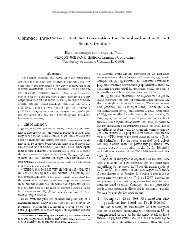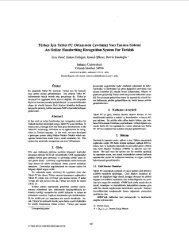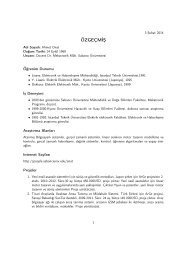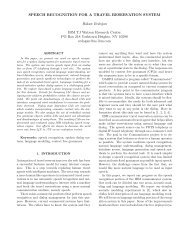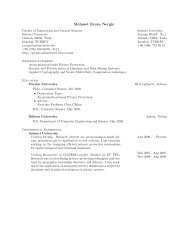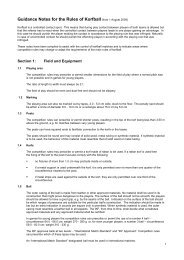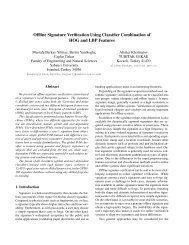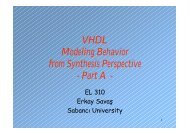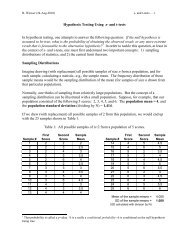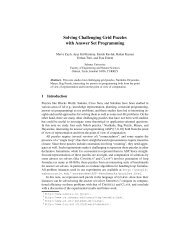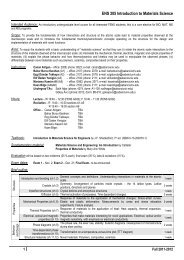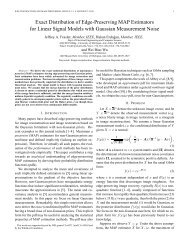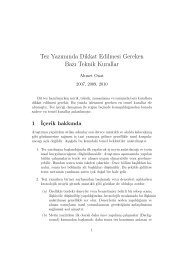Answer Set Programming
Answer Set Programming
Answer Set Programming
You also want an ePaper? Increase the reach of your titles
YUMPU automatically turns print PDFs into web optimized ePapers that Google loves.
CS 504, Fall 2008<br />
Knowledge Representation and Reasoning<br />
In the last case, the superscript c and the sign ≤ are dropped. For instance,<br />
in the head of a rule stands for<br />
The body can be a conjunction (possibly empty) of<br />
• atoms possibly preceded with not,<br />
• expressions of the forms<br />
1{p, q} (1)<br />
1 ≤ {p, q} c . (2)<br />
l ≤ {F 1 , . . . , F n }<br />
{F 1 , . . . , F n } ≤ u<br />
l ≤ {F 1 , . . . , F n } ≤ u<br />
provided that each F i is an atom possibly preceded with not.<br />
In the last case, the sign ≤ is dropped. For instance, expression (1), when it occurs in<br />
a body of an LPARSE rule, stands for<br />
1 ≤ {p, q}.<br />
Note that this expression is different from (2).<br />
In the input language of LPARSE, :- stands for ←, and each rule is followed by a<br />
period.<br />
If we want to find, for instance, the answer sets for the program<br />
we create the file<br />
p :- not q.<br />
q :- not p.<br />
r :- p.<br />
r :- q.<br />
p ← not q<br />
q ← not p<br />
r ← p<br />
r ← q<br />
called, say, input.lp . Then we invoke LPARSE and SMODELS as follows:<br />
% lparse input.lp | smodels 0<br />
The zero at the end indicates that we want to compute all answer sets; a positive number<br />
k would tell SMODELS to terminate after computing k answer sets. The default<br />
value of k is 1. The main part of the output generated in response to this command<br />
line is the list of the program’s answer sets:<br />
2



